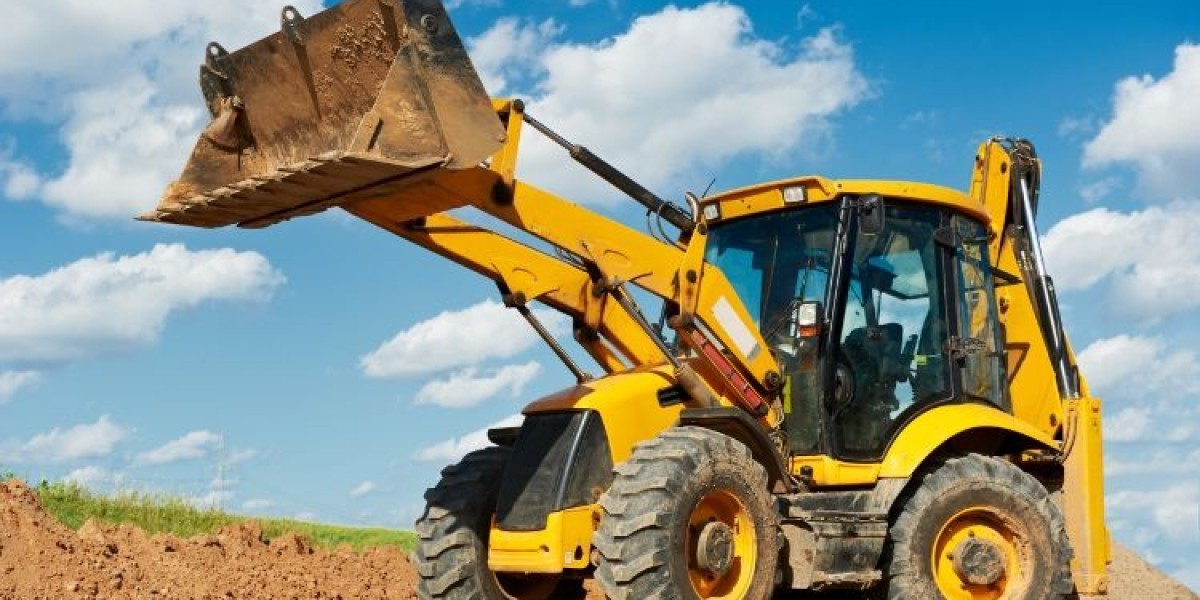The global backhoe loaders market size is expected to grow at a CAGR of 6% in the forecast period of 2025-2033, reaching a value of USD 6.10 billion by 2033. Backhoe loaders, widely recognized as versatile and essential machinery in construction, agriculture, and various industrial sectors, have experienced consistent demand due to their multi-functional capabilities. From digging trenches to lifting heavy materials, these machines are crucial to projects that require a compact yet powerful piece of equipment. This article explores the dynamics of the backhoe loader market, its segmentation, key drivers of growth, regional analysis, and competitive landscape.
Market Overview
Backhoe loaders are heavy equipment vehicles commonly used in construction, agricultural, and mining industries for a variety of tasks, including digging, loading, and lifting. As a combination of a tractor, a loader, and a backhoe, they are adaptable and highly valued for their ability to perform multiple functions, making them ideal for small to medium-scale projects. These machines are capable of performing a range of tasks in confined spaces, which enhances their popularity in urban construction sites and agricultural activities.
The market for backhoe loaders is expected to witness robust growth from 2025 to 2033, driven by factors such as rising construction and infrastructure activities, expanding urbanization, and increasing demand from the agriculture and mining sectors. Technological advancements and innovation in backhoe loader designs, including the introduction of hybrid and electric models, are also expected to fuel market growth.
Market Segmentation
By Product Type
Backhoe loaders are typically available in two main types: side shift and center mount.
Side Shift Backhoe Loaders
Side shift backhoe loaders are designed to enable the backhoe to shift to the side of the machine. This provides increased maneuverability, making them perfect for narrow workspaces or projects that require high precision. These loaders are particularly useful in urban construction settings where space constraints are a concern.Center Mount Backhoe Loaders
In contrast, center mount backhoe loaders feature a backhoe mounted centrally on the machine. These loaders are more stable and are commonly used for larger excavation projects. While they may not have the same flexibility in tight spaces as side-shift models, their robust design allows them to handle heavy-duty tasks effectively.
By Digging Depth
Backhoe loaders also vary based on their digging depth, which determines the range of tasks they can perform:
Under 10 Feet
Backhoe loaders with a digging depth of under 10 feet are typically used for residential construction projects, landscaping, and small-scale excavation tasks. Their smaller size and depth make them suitable for jobs where large-scale digging is not required.10-15 Feet
These backhoe loaders are designed for medium-sized excavation jobs, including trenching for utilities, roadworks, and smaller construction projects. Their versatility allows them to be used for a range of tasks without being too large or cumbersome.Over 15 Feet
Heavy-duty backhoe loaders with digging depths greater than 15 feet are suited for large-scale projects, including infrastructure development, mining, and extensive roadwork. These models are built to handle tough environments and demanding tasks, and their performance in large-scale operations is unparalleled.
By Engine Power
The power of a backhoe loader engine directly impacts its performance and the range of tasks it can handle. Engine power is typically categorized as:
Less than 75 HP
These low-powered models are designed for light-duty tasks and smaller jobs, making them perfect for residential projects and smaller agricultural operations.75-100 HP
These medium-powered models are commonly used for medium-scale construction, landscaping, and agriculture tasks. Their versatility makes them a popular choice among small to medium contractors.Over 100 HP
Backhoe loaders with over 100 HP are heavy-duty machines used for large-scale commercial and industrial applications. These machines are ideal for projects such as infrastructure development, mining, and major construction jobs.
By Distribution Channel
The distribution channels for backhoe loaders include offline and online methods, with both having distinct advantages.
Offline (Dealers and Distributors)
The offline distribution channel remains dominant, with backhoe loaders being sold through authorized dealers and distributors. Buyers often prefer this method for its direct interaction, support, and after-sales services such as maintenance and spare parts availability.Online (E-commerce and Direct Sales)
The online channel is gaining traction, as more buyers are opting for the convenience of researching and purchasing machinery through e-commerce platforms. This trend has been particularly prominent during the COVID-19 pandemic and is expected to grow as more businesses embrace digital sales platforms.
By Application
Backhoe loaders find applications in various industries, including construction, agriculture, and mining.
Construction
The construction sector is one of the largest consumers of backhoe loaders, using them for digging, trenching, loading, and lifting. As urbanization and infrastructure development accelerate, the demand for backhoe loaders is expected to increase significantly.Agriculture
In agriculture, backhoe loaders are used for digging, trenching, and land preparation. Their compact design and versatility make them ideal for working in farms of all sizes, from small family-owned farms to large agricultural operations.Mining and Other Applications
Backhoe loaders also play a vital role in mining and other sectors such as roadworks, utilities, and forestry. Their heavy-duty performance makes them well-suited for demanding environments.
Regional Analysis
North America
In North America, the backhoe loaders market is expected to grow steadily due to the ongoing demand for infrastructure development and residential construction projects. The U.S. and Canada are major consumers, with increasing adoption of backhoe loaders in urban and suburban construction sites.
Europe
Europe is another key market for backhoe loaders, driven by the growing construction and agricultural sectors. Countries like Germany, France, and the UK are seeing increasing investments in infrastructure, leading to higher demand for backhoe loaders.
Asia-Pacific
The Asia-Pacific region, particularly China and India, is witnessing rapid urbanization, infrastructure development, and industrialization, which is expected to drive demand for backhoe loaders. This region is poised to be the fastest-growing market for these machines during the forecast period.
Latin America and Middle East Africa
In Latin America, especially in Brazil and Mexico, and in the Middle East and Africa, the demand for backhoe loaders is increasing as both regions focus on construction, infrastructure, and mining projects.
Market Dynamics
SWOT Analysis
- Strengths: The versatility of backhoe loaders and their multi-functional capabilities are key strengths, making them indispensable in multiple industries.
- Weaknesses: High initial costs and the need for skilled operators could limit market growth, especially in developing regions.
- Opportunities: Technological advancements, including electric and hybrid backhoe loaders, are presenting new opportunities for growth, along with rising demand for infrastructure projects.
- Threats: The market faces competition from alternative construction equipment, such as mini excavators, which can perform similar functions in some cases.
Porters Five Forces Analysis
- Threat of New Entrants: Barriers to entry include high capital investment and the need for technological expertise.
- Bargaining Power of Suppliers: Strong relationships with suppliers of critical components (like engines and hydraulic systems) are essential for manufacturers.
- Bargaining Power of Buyers: Buyers seek competitive pricing and value-added features, influencing pricing strategies.
- Threat of Substitutes: Substitutes like mini excavators and skid-steer loaders could impact demand for backhoe loaders in certain regions.
- Industry Rivalry: Intense competition exists among established brands like Caterpillar, JCB, and CASE, driving innovation and product differentiation.







